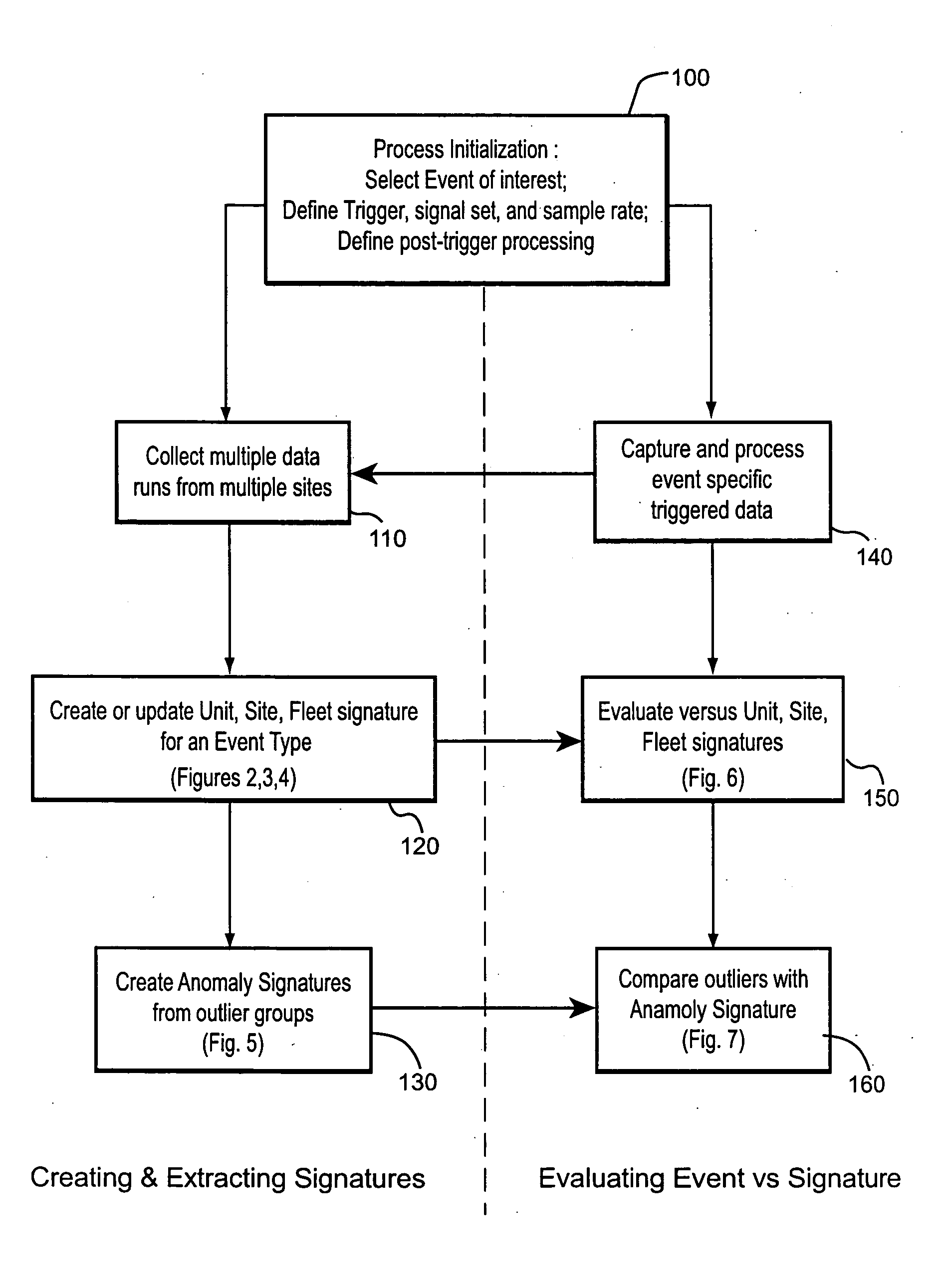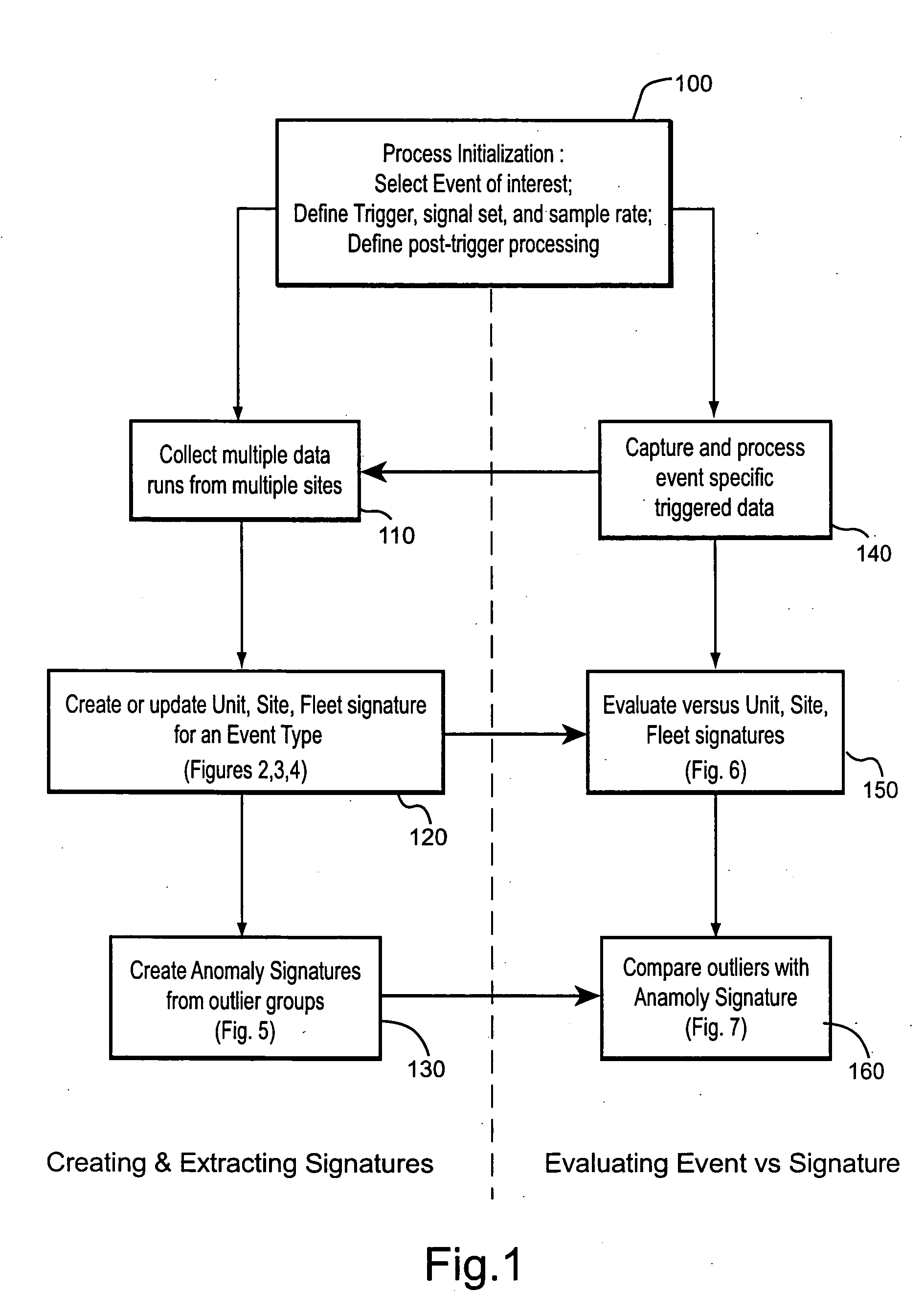Method for developing a unified quality assessment and providing an automated fault diagnostic tool for turbine machine systems and the like
- Summary
- Abstract
- Description
- Claims
- Application Information
AI Technical Summary
Benefits of technology
Problems solved by technology
Method used
Image
Examples
Embodiment Construction
[0023] Operational events which take place in large / complex turbine systems, fluid compressor / pumping systems and the like are often characterized by one or more operational variables that may be influenced by uncontrollable commonplace variations in ambient conditions and fuel type / quality. A computer implemented process is provided for developing a unified quality assessment of one or more of such turbine operational events despite such uncontrollable variations. As briefly outlined above, a unique approach is described that involves removing, or at least reducing, the effects of variations in ambient operating conditions and variations in fuel quality by initially performing a mathematical transform upon at least some of the acquired system / sensor data to effectively transform the data into a “corrected” parameter space, after which both transformed and non-transformed data corresponding to certain predetermined operational variables are statistically analyzed using, for example,...
PUM
 Login to View More
Login to View More Abstract
Description
Claims
Application Information
 Login to View More
Login to View More - R&D
- Intellectual Property
- Life Sciences
- Materials
- Tech Scout
- Unparalleled Data Quality
- Higher Quality Content
- 60% Fewer Hallucinations
Browse by: Latest US Patents, China's latest patents, Technical Efficacy Thesaurus, Application Domain, Technology Topic, Popular Technical Reports.
© 2025 PatSnap. All rights reserved.Legal|Privacy policy|Modern Slavery Act Transparency Statement|Sitemap|About US| Contact US: help@patsnap.com



